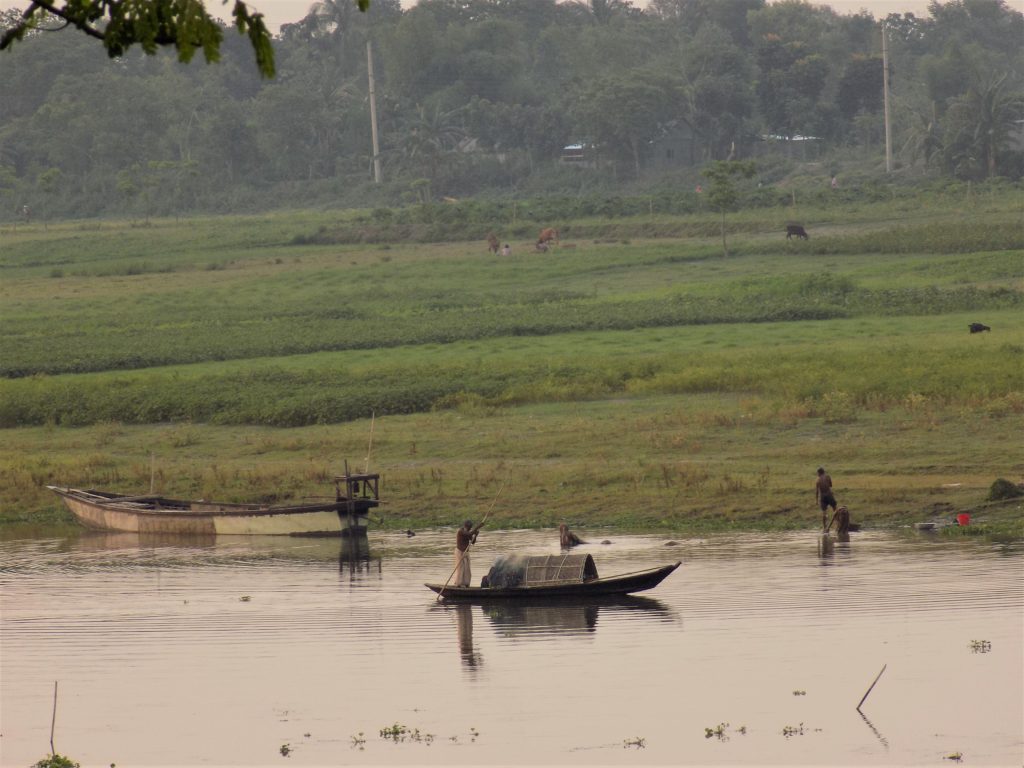3.6 billion people live in areas that can experience a month or more of water scarcity each year. The authors of the 2018 edition of the United Nations World Water Development Report warn that this could increase to almost 6 billion people by 2050. The report, launched during the World Water Forum in Brasilia, Brazil, focuses on nature-based solutions (NBS) for the world’s water challenges. Nature-based solutions are techniques found in natural processes that can be used to manage aspects of the water cycle.
Nature-based solutions are still embedded in social relations. The report argues that “Benefits of NBS often favour the most disadvantaged and vulnerable, such as minority communities, rural communities and women.” NBS, it explains, can create jobs in rural areas and lower health risks due to poor quality water, which can support women’s advancement. Women are disproportionately affected by water-related health issues and lack of access to water, as they are often in charge of finding water and caring for the sick.
In fact, women play a key role in water management around the world and the majority of water carriers are women and children, especially girls. They often spend a substantial amount of time and physical energy gathering water, risking injury and assault. Surveys in India, Nepal, and Pakistan found that women spent around one hour a day collecting water. In sub-Saharan Africa, rural women may walk up to two hours to collect water, and surveys conducted in 25 countries in the region show that women spend a combined total of 16 million hours per day on gathering water. Around the world, women and girls spend an estimated 200 million hours a day collecting water, time which could be spent on income generating activities, education, or leisure.
With any new water-related initiative, including nature-based solutions, women should be included in the design and implementation process. Unfortunately, it’s not uncommon for women to be left out of meaningful roles in water committees or programs.
Ignoring gender differences can lead to less effective policies and initiatives.Overlooking gender roles, power dynamics, and the cultural context can result in incorrect evaluations of the effects of policies on local communities. Research into climate change adaptation strategies has shown that if researchers ignore differences between the strategies of men and women, it lowers the effectiveness of climate change responses and leads to uncertain predictions. In agricultural development, overlooking gender gaps in productivity has meant losing opportunities for reducing hunger and poverty. When it comes to economic empowerment for women, it’s difficult to identify how to close income gaps without data that is disaggregated by sex. Whatever the issue area, analyzing gender differences is an important step in assessing and crafting effective policies.

People using a river in Bangladesh. Credit: Deborah Rubin 2017.
Cultural Practice, LLC (CP) has worked on several different topics related to gender and water, including contributing guidance on gender integration for the Water, Land, and Ecosystems (WLE) CGIAR Research Program (CRP). CP provided research and recommendations on increasing attention to gender within CRP topics such as sustainably increasing land and water productivity, regenerating degraded agricultural ecosystems, and managing resource variability and competing use. Drawing on CP’s sectoral expertise both in gender and in environment and natural resource management, CP supplied guidance and recommendations with potential long-term impacts for the WLE’s research.
For the WLE research program lead by the International Water Management Institute (IWMI), CP developed guidance materials on gender equity in irrigation projects, including a data collection tool. IWMI created a pilot from the CP data collection tool and from that pilot developed the Gender in Irrigation Learning and Improvement Tool(GILIT) with the International Food Policy Research Institute in 2017.
The GILIT identifies areas of irrigation projects that have succeeded or need improvement in advancing gender equity. The tool’s indicators and discussion questions are centered around men and women’s access to project resources, participation, and benefits. By ensuring the everyday experiences of men and women, and their differing access to assets and enabling conditions, are captured rather than overlooked, the GILIT supports project management in addressing gender issues and implementing effective irrigation projects.
Women and men have different needs, preferences, and roles in relation to natural resources and water, and must have equal participation in programs affecting their communities. The United Nations does well to note the specific benefits to women and other vulnerable communities in relation to nature-based solutions for water. The report justifies the need for a deeper dive into gender-responsive water-related research and programs.
Photo: Woman working in water in Tanzania. Credit: Deborah Rubin 2008.

